Se trata de una Comunidad Nativa reconocida en el año 1976 en donde coexiste una diversidad de especies de flora y fauna que debe ser aprovechada bajo un plan de sostenibilidad. Esta se encuentra ubicada en el distrito de Tambopata y es considerada como una de las comunidades nativas más importantes de la región, no sólo porque cuenta con una población relativamente numerosa que en la actualidad alcanza los 620 habitantes aproximadamente, sino también por la diversidad de grupos humanos que conviven en la propia comunidad como nativos de la etnia Ese Eja, mestizos, ribereños y migrantes andinos, quienes desarrollan sus actividades de manera cotidiana.
Esta comunidad realiza entre sus principales actividades económicas, la agricultura, el turismo, la recolección de castaña y otros frutos, la pesca, la caza y el aprovechamiento de madera, el cual es el complemento para los gastos de alimentación de la familia, proveyendo de recursos económicos para la compra de útiles escolares de los hijos en edad escolar entre otras necesidades.
La importancia de esta comunidad radica, entre otras cosas, en su diversidad biológica, la cual incluye a dos de las más grandes especies de depredadores de la amazonia; el águila arpía y el lobo marino, quienes se constituyen en atractivos turísticos, así como también los recursos, paisajísticos, diversidad de flora y especies maderables y no maderables, etc.
En cuanto a la actividad turística, la Comunidad Nativa Infierno suscribió en mayo del 1996 un contrato con la empresa Rainforest Expeditions por un periodo de 20 años para la operación y administración en sociedad con la organización comunal del albergue Posada Amazonas, el cual se ubica dentro del territorio de la comunidad. Este contrato establece que los ingresos generados por la actividad turística serán repartidos en una proporción de 60 % para la comunidad y el restante 40 % para la empresa, comprometiéndose esta última a capacitar a los comuneros en el manejo de la misma, culminado dicho plazo, será de propiedad exclusiva de la comunidad.
El presente documento es fruto de las actividades realizadas durante los talleres en esta comunidad, en el marco del proyecto “Gestión Forestal Sostenible y Aprovechamiento de los Servicios Ecosistémicos en los Bosques Administrados por la Comunidad Nativa Ese Eja de Infierno, Perú”, durante el mes de abril del presente año. Se empleó la metodología participativa, para ello se contó con la participación de autoridades y población en general de esta comunidad, y se trabajó en la recolección de información.
Reseña Histórica de la CC.NN. Infierno (Origen de la comunidad nativa, su denominación)
Para entender el proceso de la historia de la comunidad nativa de Infierno, primero se debe tener en cuenta algunas consideraciones preliminares; según Summer, Percy (IBC 2001) en primer lugar, la comunidad esta compuesta actualmente por poblaciones étnicamente diferenciadas entre los que debemos nombrar, población indígena del grupo étnico Ese’eja, colonos de origen andino, mestizos y ribereños, las cuales han tenido distintos patrones de ocupación en el área. Por ello, al hablar de la formación de la comunidad nativa de Infierno, debemos distinguir entre los distintos procesos de asentamiento que han tenido cada uno de los grupos étnicos que la componen. En segundo lugar, en la historia de la formación de la comunidad, debemos reconocer dos procesos: primero, la creación del caserío de Infierno y, segundo, la de la comunidad nativa.
De otro lado, un factor importante en la historia de los Ese Eja del rio Tambopata fue el papel jugado por la iglesia católica. Ya que fueron misioneros dominicos quienes inician en las primeras décadas del siglo pasado los contactos entre la iglesia y miembros de la etnia Ese Eja. Fue en 1920 que tienen lugar las primeras expediciones de la orden dominica a la región, primero hacia el rio Malinowsky y luego hacia los ríos La Torre, Chuncho e Inambari. En la zona del rio Tambopata, los Dominicos concentraron a la población nativa que vivía dispersa en torno a una misión o internado. Por esa época un enfrentamiento entre misioneros y nativos termino con la muerte de un sacerdote. Este hecho contuvo la avanzada misional hasta la década del 30, en que los dominicos trasladaron a los Ese Eja a una misión en el lago Valencia, donde permanecieron por un tiempo.
Esta misión tampoco estuvo ajena a los conflictos. Estos se produjeron por la concentración en la misión de dos grupos dialectales diferentes: los del Tambopata y los de Madre de Dios y Sonene, que eran tradicionalmente enemigos. La introducción en 1936 de individuos de la etnia iñapari, procedentes del río Pariamanu, agudizó aún más el conflicto étnico, el que desembocó en la muerte de un sacerdote a manos de un indígena iñapari en 1937. Este incidente llevó a los padres dominicos a cerrar la misión, lo que permitió la dispersión de los Ese’eja. Sin embargo, en 1943 algunos fueron confinados en la misión El Pilar, sobre el río Madre de Dios, mientras que otros fueron agrupados en la década del 50 en el Fundo Concepción, aguas abajo de Puerto Maldonado.
Los Ese Eja que escaparon a estas nuevas reagrupaciones, se instalaron en la quebrada La Torre. Pero en la década del 50, además del río La Torre los Ese’eja se encontraban dispersos en las riberas del Tambopata y en el caserío Chonta, en el rio Tambopata, los Ese Eja estaban localizados en la zona conocido como Hermosa Grande, sobre la margen derecha del río, mientras que Chonta se ubicaba en su margen izquierda. Los pobladores de Chonta habían elegido este lugar impulsados por la necesidad de contar con una escuela cercana para sus hijos. En esta época, vivían en Chonta alrededor de nueve familias Ese’Eja..
A fines de la década del 60, se creó una escuela en Hermosa Grande, la cual nunca llegó a funcionar. Por aquella época, ya existían pobladores de origen ribereño habitando el sector conocido como Infierno. Estos pobladores eran los descendientes de los primeros migrantes que llegaron a la región del Madre de Dios durante el boom del caucho o motivados por la extracción de cascarilla, oro o madera. Los ribereños de Infierno necesitaban también de una escuela y una forma de obtenerla era trasladando la escuela de Hermosa Grande a Infierno. Para ello los pobladores de Infierno persuadieron a los Ese’eja de hermosa Grande para mudarse a Infierno, ya que sólo así podían cumplir el requisito de población escolar que exigía el estado. Finalmente, todos los pobladores de Hermosa Grande se trasladaron a Infierno, dando origen al caserío de este nombre. Una vez creado el caserío, la población ribereña se agrupa sobre la margen izquierda del río Tambopata, donde estaba el local escolar, mientras que los nativos se instalan sobre la orilla derecha.
En 1965 se termina la construcción de la carretera Cusco-Puerto Maldonado, lo cual abrió el área de Madre de Dios a la colonización por campesinos de la sierra, madereros y mineros. En estos años, empiezan a llegar al Tambopata los primeros migrantes andinos.
En los primeros años de la década del 70, llegaron a Infierno funcionarios de SINAMOS (Sistema Nacional para la Movilización Social) con el objeto de organizar a la población local según modelos diseñados por el gobierno militar de ese entonces. Los funcionarios propusieron dos alternativas: la creación de una cooperativa agraria de producción en la margen izquierda, que impulsaría la agricultura y la ganadería, esta última sobre la base del ganado propiedad de uno de los pobladores ribereños de mayor poder económico; o la creación de una comunidad nativa en la margen derecha, basada en la alta presencia Ese’eja en este sector. Es así que en una extensa asamblea se acordó la creación de la comunidad nativa de Infierno, la primera de Madre de Dios, donde se incluía a población no nativa. La nueva comunidad fue titulada con una extensión de 9558 ha en 1976.
Las versiones sobre las razones por las cuales miembros no-Ese’eja fueron incorporados en la comunidad nativa son varias. Una versión se refiere a que los Ese’eja fueron obligados por los funcionarios de SINAMOS a aceptar la presencia de los ribereños y andinos. Aparentemente, SINAMOS actuaba bajo una ideología socialista, condicionando el apoyo del gobierno, sobre todo la construcción de una escuela y un título legal, a la aceptación de los no-nativos (García y Barriga 1994:
4). El personal de SINAMOS informó sobre las ventajas del modelo comunal en lo que se refiere a apoyo estatal ofrecido por el gobierno militar. La comunidad tenía derecho a solicitar apoyo del gobierno para obras públicas, principalmente para obras públicas (principalmente para educación y salud) así como representación legal. Sin embargo para recibir su titulo de propiedad legal tenían que congregar por lo menos 20 familias. Para esa época los Ese Eja sólo representaban 14 familias.
Para constituirse como comunidad inicialmente no se ponían de acuerdo, por un lado los comuneros de mayor edad se oponían a que se unieran nativos con mestizos y migrantes andinos, por el temor que sean estos ultimo quienes iban a prevalecer, en cambio los jóvenes si venían con buenos ojos que se diera esa unión, porque en su razonamiento era lo mas conveniente.
Lo que primó para que se diera esa unión entre Ese Eja, mestizos, ribereños y migrantes andinos fue que el SINAMOS ofrecía apoyo del estado peruano para actividades de salud y educación, específicamente les ofrecieron crear una escuela. Pero el argumento de más peso fue que el constituirse en comunidad les garantizaba la posesión de las tierras al obtener el titulo de propiedad; es por ello que finalmente se constituyó la comunidad de Infierno.
Ubicación de la comunidad nativa Infierno (Extensión territorial, límites, como se llega a la comunidad, cuántas vías cuenta, tipos de sistema de comunicación y transporte, acuática y terrestre, etc.)
La comunidad de Infierno está ubicada en ambas márgenes del río Tambopata o en lengua local Ese’eja, río Bahuaja, en el departamento de Madre de Dios, en el sudeste del Perú. La comunidad se encuentra en un lugar estratégico por ser la principal vía de acceso por el Río Tambopata a la Reserva Nacional Tambopata y al Parque Nacional Bahuaja-Sonene y por su fácil acceso, a solo 40 minutos por carretera desde la ciudad de Puerto Maldonado. Dado estas condiciones y a su condición multiétnica, la comunidad ha sido objeto de numerosos proyectos de conservación y desarrollo, y punto de encuentro de diversos investigadores, y tesistas. La historia de la comunidad es reciente pero encierra mucho de los problemas y potenciales de la región. Además, es importante situar a la comunidad dentro de una historia de colonización. La comunidad nativa de Infierno se encuentra ubicado en el distrito de Tambopata, provincia del mismo nombre.
Los límites son los siguientes:
- Por el Este: con la zona de amortiguamiento y Alto Loero
- Por el Oeste: la Reserva Tambopata
- Por el norte: Puerto Maldonado y Chonta
- Por el sur: Comunidad La Torre
Asimismo las coordenadas UTM son lo siguiente:
- Este: 4752.51
- Norte: 8592760
La longitud es:
- Longitud 69° 13” 40.73”
- Latitud 12° 43” 46,42”
La comunidad nativa de Infierno cuenta con una extensión territorial de 9,518 hectáreas, dicho trabajo de reconocimiento y titulación fue llevado a cabo por la Oficina Zonal de Apoyo a la Movilización Social (OZAMS) Madre de Dios y luego canalizado por la Organización Regional de Apoyo a la Movilización Social (ORAMS) de Cusco y aprobado por la Dirección General de Reforma Agraria del Ministerio de Agricultura en Lima; pero los dirigentes y pobladores sostienen que cuentan con más extensión de territorio y actualmente eso está en proceso de conversación con los funcionarios de la reserva Tambopata para zanjar definitivamente ese problema.
Cómo se llega a la comunidad
Para llegar a la comunidad nativa Infierno, se realiza el recorrido; desde la ciudad de Puerto Maldonado a través de empresas de transportes, que tiene su paradero en la misma ciudad, el costo del pasaje hasta la comunidad de Infierno es de 6 nuevos soles, estas unidades trabajan desde las 8 a.m. hasta las 4 p.m. aproximadamente. En la comunidad de Infierno estas unidades trabajan hasta las 5 p.m. aproximadamente, dependiendo también del estado de la carretera, en épocas de lluvias se hace más difícil y los vehículos ya no salen de la comunidad.
Desde la localidad de La Joya hasta la comunidad el recorrido se hace vía trocha carrozable, con una distancia aproximada de 20 km, y el viaje se realiza en 40 minutos como promedio.
También existe la opción de vía fluvial, que se realiza tomando como punto inicial la ciudad de Puerto Maldonado, cuyo recorrido es por el rio Tambopata, con una duración de hora y media en bote con motor fuera de borda. Esta modalidad no es muy utilizado por que existe la vía carrozable a la comunidad y que resulta siendo más rápida.
El nombre de la comunidad nativa:
El nombre de la comunidad de Infierno proviene según informaciones de comuneros de la misma localidad y que comentan que este proviene de tiempo atrás, en dicha zona las condiciones de vida para una persona que no esta acostumbrado a vivir periodos relativamente largos se hacia difícil porque el calor era intenso y que también existía bastantes mosquitos y zancudos, por ello según cuentan una persona exclamó “esta zona no se puede vivir es un infierno” y según concluyen que de allí proviene el nombre. Pero también es cierto que se ha querido cambiar de nombre, incluso una religiosa estaba empeñada en facilitar apoyo para dicho fin, pero tuvo un contratiempo y no pudo concluir dicha acción.
En la actualidad la comunidad no está interesado en cambiar el nombre de Infierno, aducen que la población ya esta acostumbrada a ello y que aún con dicho nombre es un atractivo para el sector turismo y permite que haya más ingresos por esa actividad a través de la empresa que esta trabajando con ellos, y que en el territorio de la comunidad cuenta el albergue, Posada Amazónica también el centro Ñape, que les reporta de igual manera ingresos económicos en beneficio de la comunidad.


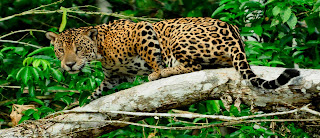

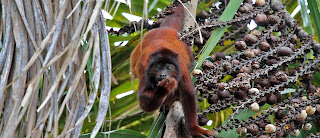
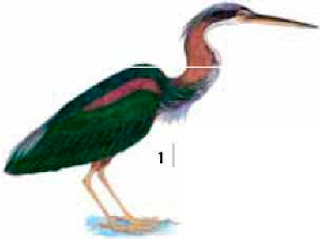



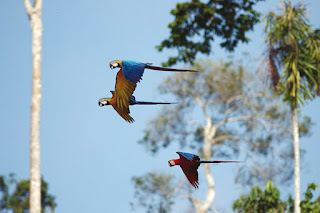
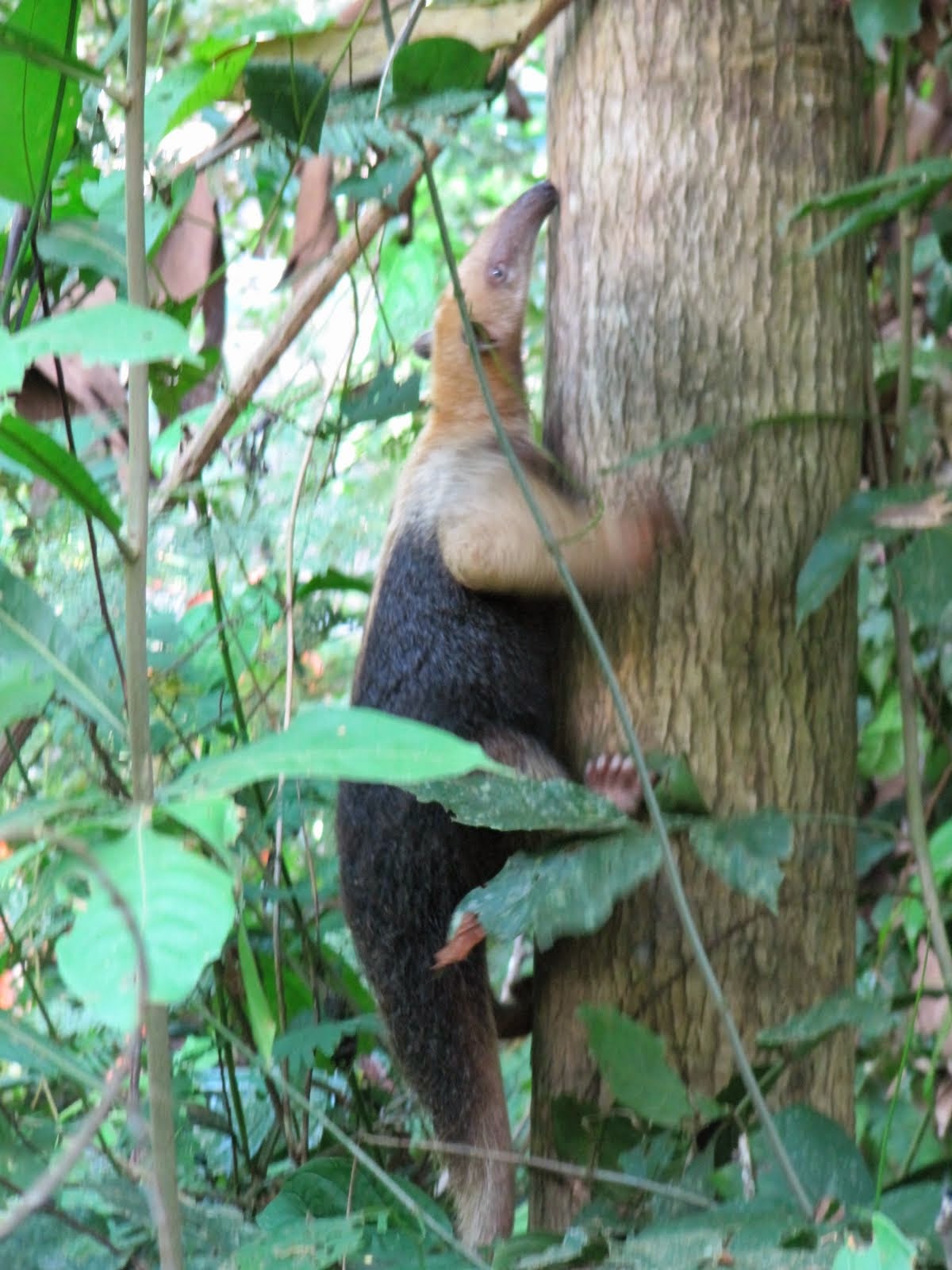



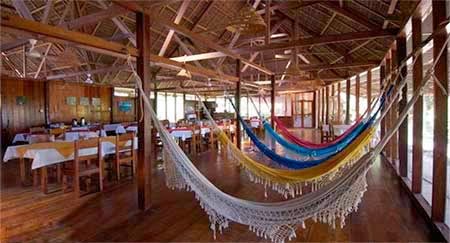
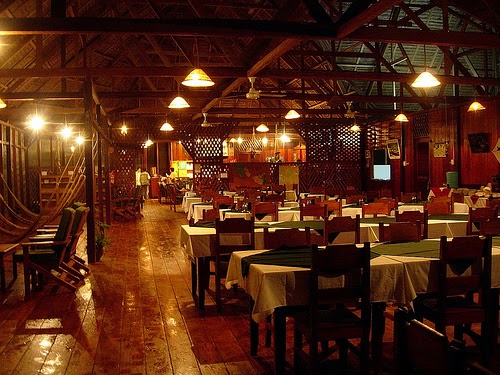
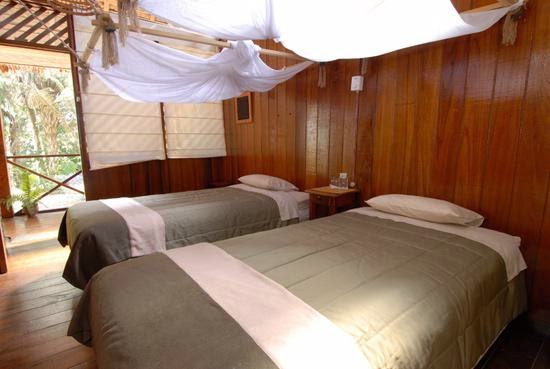





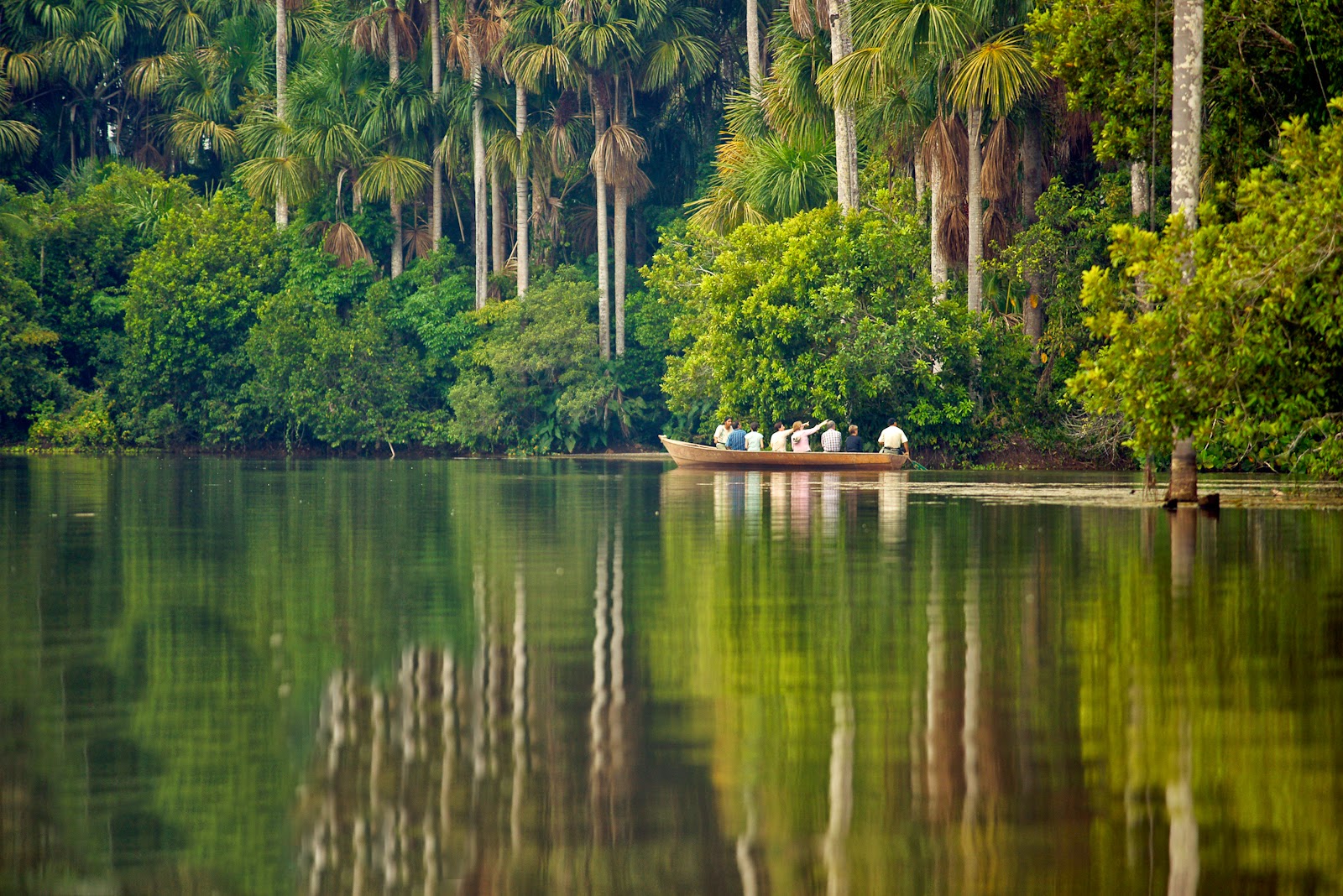
.jpg)